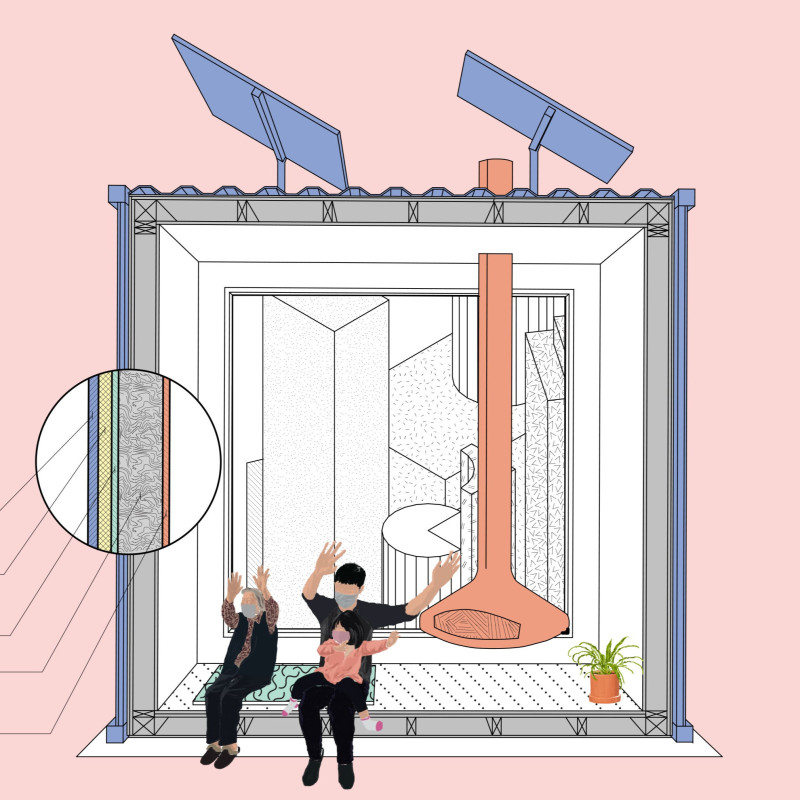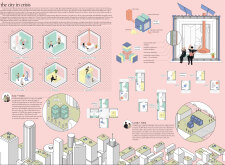5 key facts about this project
The project offers a practical response to challenges faced in urban areas during 2020, particularly those brought on by the COVID-19 pandemic and related social issues. Located in contemporary cities, it focuses on modular cubes that provide flexible and adaptable living spaces. These units are designed to meet varied needs, serving healthcare workers, vulnerable individuals, and communities affected by displacement. The aim is to create effective housing solutions that address urgent needs in urban settings.
Design Concept
The system is centered around modular cubes that can be constructed both on-site and off-site. This flexibility allows for quick assembly and easy transportation. Each cube is a self-contained living unit that can operate without connection to traditional infrastructure, or it can integrate with existing systems when necessary. This design allows for a diverse range of applications in various living situations.
Functionality and Adaptability
These modular cubes maximize their utility for different urban populations. They can be positioned on rooftops or in backyards, making use of otherwise empty space. This positioning not only enhances the aesthetics of the environment but also serves specific needs for temporary housing for people displaced by crises. The design promotes community engagement by creating spaces where people can live and interact.
Material Selection
A commitment to sustainable materials is evident in the construction of the cubes. Recycled metal panel cladding ensures durability while remaining environmentally conscious. Mycelium mushroom insulation improves energy efficiency without harmful effects. The cubes also incorporate oriented strand board as exterior sheathing for weather protection, and sustainably sourced timber combined with recycled plywood for interior surfaces adds to their ecological footprint.
Architectural Language
The overall design maintains a minimal approach, placing importance on functionality rather than decorative elements. This simplicity fosters a calm atmosphere that supports essential living. The shapes and layouts of the cubes are varied, allowing for efficient use of space and resources. This encourages residents to thoughtfully interact with both the design of their homes and the surrounding urban landscape.
Within city environments, these modular cubes provide a straightforward solution to urban living that emphasizes utility and responsiveness to current housing needs. Their design balances function with the principles of sustainability and community, offering a practical answer to the challenges of modern urban life.



















































